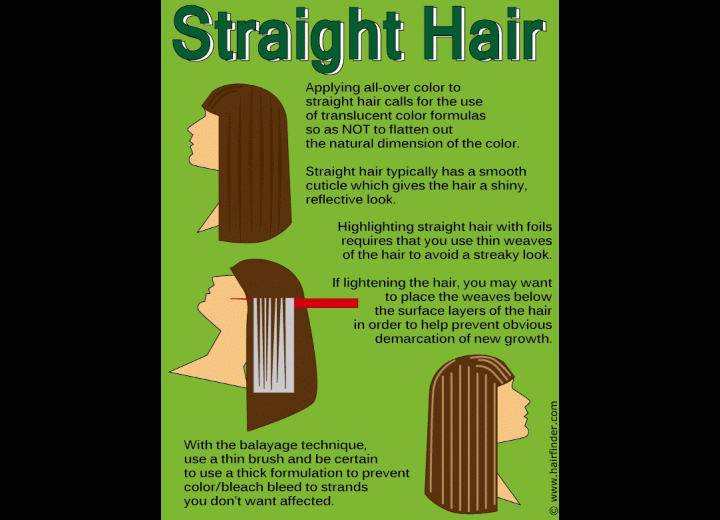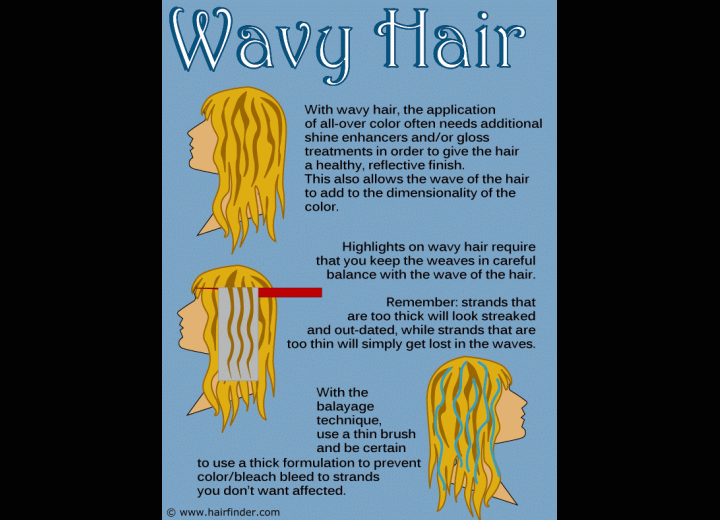Advanced Haircolor Tips

The basic hair coloring techniques for straight, wavy and curly hair
When it comes to coloring the hair, it is important to take into consideration the wave pattern of the hair. The different levels of wave (curl) in the hair create specific needs for the colorist to consider. So let’s take a look at the different types/levels of wave in the hair, and discuss the needs/specifics of the various basic coloring techniques.
Straight Hair
All-over Color
Since straight hair, when healthy, is naturally silky-smooth and shiny, it's important that the color used does not inhibit the reflectivity of the hair. If you plan to do an all-over color, particularly one that does not involve any lightening of the natural color, be sure you use a translucent color formula. This helps to prevent the color result from being flat and one-dimensional.
Highlighting – Foils
When you are using foils or paper for highlighting applications, you want to make sure that you don’t make the woven strands for coloring too thick. This will result in a "striped" effect that both looks unsightly and will mean new growth appears very prominent as the hair grows. In addition, with straight hair types, use caution to avoid adding too many highlights, creating a crowded effect.
In fact, when placing highlights (or lowlights) in straight hair, try to place them so that the color effects are positioned beneath the surface layers of the hair in the finished style. This helps to avoid obvious "new growth" demarcation, and helps create a more natural effect in the hair.
Highlighting – Balayage
The technique of balayage (also referred to as French hair painting) isn’t as common as foiling, but can be a tremendously effective technique when used on straight hair. For balayage, mix your lightener (or color) with a cream developer to create a thick formula, and use a thin brush to paint the mixture directly onto the hair on the surface layers. Specifically, with straight hair, the brush (and the subsequent painted lines) should be thin.
The goal of the balayage effect is to enhance lightness where the hair would normally become lighter naturally when exposed to sunlight. Therefore, lines painted around the front of the hair and face, as well as along the top and partings, help to brighten up the hair without a lot of fuss in applying systematic patterns of foils.
Wavy Hair
All-Over Color

Wavy hair - depending on the level of wave - can be shiny like straight hair tends to be, or may need enhancement in order to make the hair as glossy as we may desire. For this reason, wavy hair types often respond well to translucent color formulas combined with shine enhancers. These shine enhancers are often referred to as "clear-gloss" or "cellophane" treatments.
Because the waviness of the hair creates natural points along the hair shaft which more readily reflect light, using a color toner or translucent color formula with shine enhancers is a great way to add depth to wavy hair, embolden the color, and increase the shininess and healthy look of the hair.
Continue reading ...